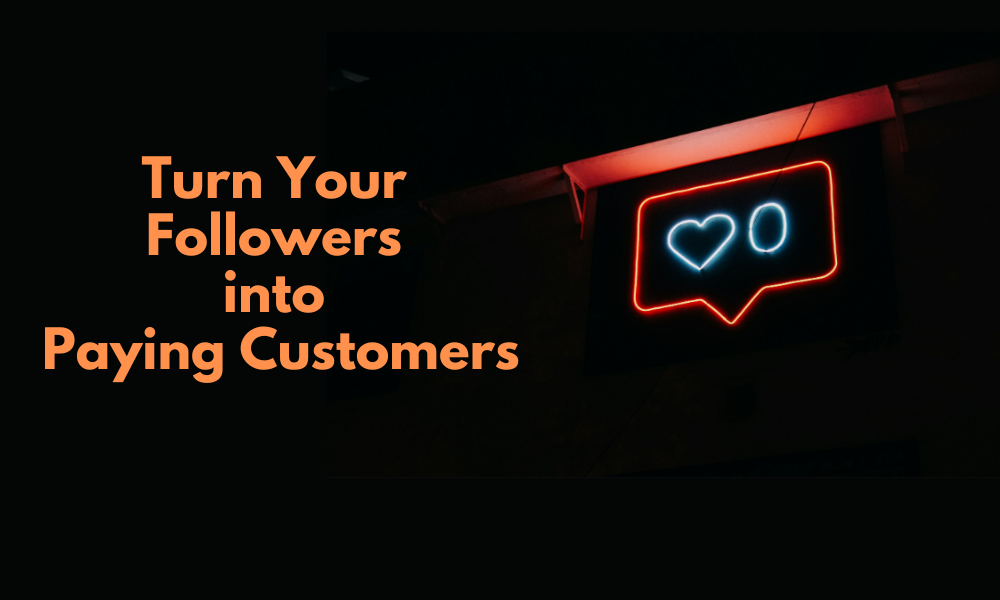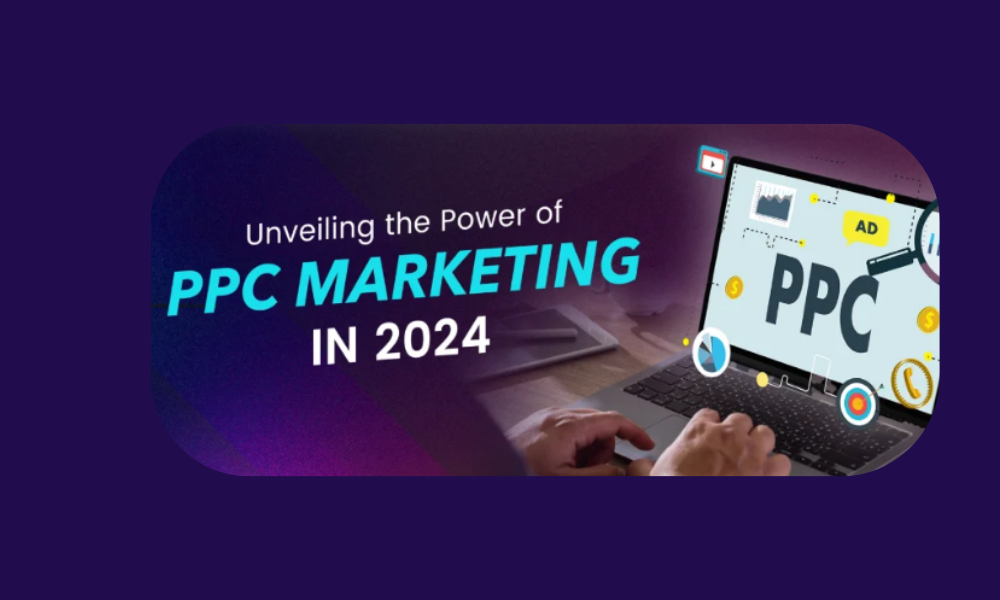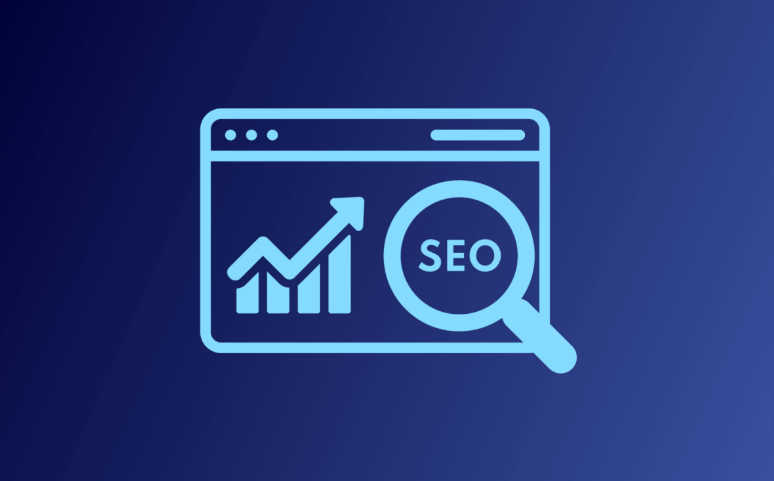5 Ways a Revamped Website Can Boost Your Sales
In today’s digital era, having a strong online presence is crucial for businesses to thrive. One of the most effective ways to boost sales and attract customers is by revamping your website. A revamped website not only enhances the aesthetic appeal but also improves functionality, which can significantly impact sales.
In this article, we’ll explore five ways a revamped website can boost your sales.
Table of contents
What is Website Revamp
A website revamp refers to the process of redesigning and updating a website to improve its appearance, functionality, and user experience. This could involve making changes to the layout, color scheme, typography, navigation, and overall design elements of the website.
Additionally, a revamp may also include updating content, adding new features, optimizing for mobile devices, and enhancing performance and security. The goal of a website revamp is usually to attract more visitors, engage users better, and achieve specific business objectives.
| Stage | Description |
| Assessment | Evaluate current website performance, identify strengths and weaknesses. |
| Goal Setting | Define objectives for the revamp, such as improving user experience or increasing sales. |
| Planning | Create a detailed plan outlining tasks, timelines, and resources needed. |
| Design | Develop new visual elements, layout, and user interface based on goals and branding. |
| Development | Implement design changes, update content, and integrate new features or functionalities. |
| Testing | Conduct thorough testing to identify and fix any bugs, ensure compatibility, and usability. |
| Launch | Deploy the revamped website to the live environment and monitor performance post-launch. |
| Optimization | Continuously monitor metrics, gather feedback, and make adjustments for ongoing improvement. |
Enhanced User Experience

Improved Navigation
A revamped website often comes with a more intuitive navigation system, making it easier for visitors to find what they’re looking for. By streamlining the navigation menu and organizing content effectively, users can navigate through the website effortlessly, leading to longer browsing sessions and increased engagement.
Mobile Responsiveness
With the majority of internet users accessing websites via mobile devices, having a mobile-responsive website is essential. A revamped website is optimized for mobile devices, ensuring that it looks and functions seamlessly across all screen sizes. This enhances the user experience and prevents potential customers from bouncing off your site due to poor mobile performance.
Increased Visibility and Traffic
Search Engine Optimization (SEO)
A revamped website often incorporates SEO best practices, making it more visible to search engines like Google. Search engine optimization refers to the steps taken for improving a website ranking. These include publishing unique content, improving the website images, link building, technical checks etc.

By optimizing meta tags, headings, and content structure, your website can rank higher in search engine results pages (SERPs), driving organic traffic, boost sales and visibility among your target audience.
Social Media Integration
Integrating social media buttons and sharing options into your revamped website can amplify its reach and drive traffic from social platforms. It helps the user to easily navigate through your website.
By encouraging visitors to share your content across social channels, you can expand your online presence and attract potential customers who may not have found your website otherwise.
Builds Trust and Credibility
Professional Design
A well-designed website instills trust and credibility in your brand. A revamped website with a modern and professional design reflects positively on your business, conveying a sense of reliability and professionalism to visitors. This can increase their confidence in your products or services and ultimately lead to higher sales conversions.
Testimonials and Reviews
Including testimonials and reviews from satisfied customers on your revamped website can further enhance trust and credibility. Positive feedback serves as social proof, reassuring potential customers about the quality and reliability of your offerings. By prominently featuring testimonials, you can influence purchasing decisions and drive sales.
Better Conversion Rates

Clear Call-to-Actions (CTAs)
A revamped website strategically places clear and compelling call-to-action buttons throughout the site, prompting visitors to take desired actions such as making a purchase or signing up for a newsletter. By guiding users towards conversion points, you can increase the likelihood of turning visitors into paying customers.
Streamlined Checkout Process
An optimized checkout process is essential for maximizing sales on an e-commerce website. A revamped website simplifies the checkout process, reducing friction and eliminating unnecessary steps that could deter customers from completing their purchase. A seamless checkout experience encourages conversions and boosts sales revenue.
Conclusion
A revamped website can significantly impact your business’s sales by enhancing user experience, increasing visibility and traffic, building trust and credibility, and improving conversion rates. To boost your sales and ensure your website is optimized effectively, consult an expert web development services provider.
By investing in the redesign and optimization of your website, you create a powerful online presence that drives sales growth and contributes to your business’s success. Moreover, it helps you remain ahead of your competitors.
Read more : How to Turn Your Followers into Paying Customers
FAQs
The timeline for revamping a website varies depending on the complexity of the project. It can range from a few weeks to several months, depending on factors such as the size of the website and the extent of changes needed.
Initially, there may be fluctuations in search engine rankings as the revamped website gets indexed. However, with proper SEO implementation and ongoing optimization efforts, your website’s rankings should improve over time.
While technical skills can be helpful, many website platforms offer user-friendly tools and templates that make the revamping process accessible to individuals with varying levels of technical expertise.
It’s recommended to update your website regularly to keep it fresh and relevant. This could involve making small tweaks and updates on an ongoing basis, as well as larger revamps every few years to stay current with design trends and technology advancements.
Yes, many businesses have experienced significant improvements in sales and performance after revamping their websites. You can find case studies and testimonials from companies in various industries to see how website revamps have benefited them.

Alex Mitch
Welcome to my blog! With over 10 years in digital marketing , I’ve seen its incredible impact on smaller businesses. Join me as we explore how digital marketing can grow your audience and boost your business. Whether you’re an experienced entrepreneur or just starting out, you’ll find practical tips and insights to enhance your digital marketing strategies.
How to Turn Your Followers into Paying Customers: The Ultimate Guide to Converting Social Media Buzz into Sales
Building a loyal social media following is fantastic, but how do you translate those likes and comments into cold, hard cash? Converting your followers into paying customers is the ultimate goal, and it’s easier than you might think.
Here’s a comprehensive guide packed with actionable strategies to turn your social media followers into raving fans and paying customers.
Table of contents
Understanding Your Audience: The Foundation of Success
Understanding your customers is the key to success in this digital era. It is the only way to know consumer habits, buying behaviors, and demands. Established brands often conduct online surveys to know more about their audience.
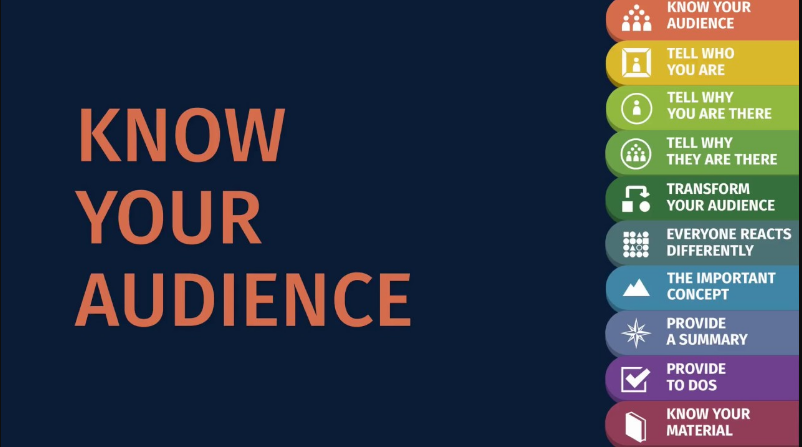
By knowing your audience, you can tailor your social media presence to their interests, fostering a sense of connection and trust. Below are some questions you can ask yourself when working on knowing your audience
Key Questions to Ask Yourself:
- Who is my ideal customer? – This defines who you’re creating content for. Are they young professionals, stay-at-home parents, gamers?
- What are their needs and pain points? – What problems do they face? What are they looking for on social media? Understanding their struggles allows you to offer solutions or content that addresses them.
- What kind of content resonates with them? – Do they prefer funny memes, informative articles, or visually appealing infographics? Knowing their preferences helps you tailor your content to their tastes, increasing engagement.
Content is King: Create Engaging and Valuable Posts
Social media is all about providing value. Focus on creating high-quality content that educates, entertains, or inspires your audience. Overlooking this important aspect may result in a lower traffic rank.

Nowadays, users expect something new and they scroll through social media to find the answers. Whether how solid the product you are offering is, your audience may not like it when the social media content is boring and duplicated.
Post fresh and unique content on every platform, and let your users know how this particular product is solving their problems. This will help you to engage the audience and retain your old customers as well.
- Post consistently: Maintain a regular posting schedule to stay top-of-mind with your followers.
- Variety is key: Experiment with different content formats like images, videos, polls, and live streams.
- Address their needs: Offer solutions to their problems and showcase how your product or service can benefit them.
The Power of Engagement: Building Relationships
Social media is a two-way street. Don’t just broadcast messages; actively engage with your followers. Respond to comments, answer questions, and participate in conversations. This builds rapport and fosters a sense of community.
Spare some time to interact with your users, communicate with them to know their demands. A brand that connects with its audience is considered a one that actually cares for his customers. In return it gets customer loyalty.
- Run contests and giveaways: Generate excitement and incentivize engagement with fun contests and giveaways.
- Host Q&A sessions: Offer your expertise and connect with your audience on a deeper level.
- Show appreciation: Thank your followers for their support and acknowledge their contributions.
Calls to Action: Guiding Followers Towards Conversion
Don’t be afraid to nudge your followers in the right direction. Include clear calls to action (CTAs) in your posts, telling them exactly what you want them to do – visit your website, sign up for your email list, or make a purchase.
Calls to action are crucial for brands aiming to turn followers into customers. Ensure your call to action is easy to understand and clearly guides potential clients toward the desired action.
- Make it easy to buy: Streamline the buying process by providing clear links to your products or services.
- Offer exclusive deals: Reward your followers with special discounts or promotions not available elsewhere.
- Highlight customer testimonials: Showcase positive experiences from existing customers to build trust and social proof.
Building Your Email List: A Powerful Conversion Tool
Email marketing allows you to nurture leads and connect with your audience on a more personal level. Encourage your followers to subscribe to your email list by offering valuable incentives like exclusive content or early access to sales.
In addition, you must send emails regularly to remain intact with your audience. It is a tool that helps you to build brand awareness amongst customers. Small and established enterprises rely heavily on this powerful tool to increase their audience.
- Integrate social media with email marketing: Allow followers to sign up for your email list directly through your social media profiles.
- Segment your email list: Tailor your email content to different audience segments for a more personalized experience.
- Draft and refine the message: make sure the message is clear and understandable for the audience, and avoid using jargon and technical terms
- Track your results: Monitor your email marketing metrics to see what resonates with your audience and refine your strategy accordingly.
Conclusion
Transforming your social media followers into customers may takes time and effort. But by consistently implementing these strategies, you’ll cultivate a loyal following that trusts your brand and is eager to support your business. Remember, social media is a marathon, not a sprint. Be patient, stay dedicated, and watch your follower base blossom into a community of raving fans and paying customers.
Read more: Digital Marketing Strategies for the Furniture Businesses
FAQs
There’s no one-size-fits-all answer, but aiming for 2-3 times a day on platforms like Twitter and Instagram is a good starting point.
Many social media management tools can help you schedule posts, track analytics, and engage with your audience. Popular options include Hootsuite, Buffer, and Sprout Social.
Look to your audience for inspiration! Pay attention to trending topics and questions they’re asking. You can also repurpose existing content into different formats like infographics or videos.
Most social media platforms offer built-in analytics that tracks metrics like reach, engagement, and website clicks. Use these insights to see what’s working and what needs improvement.
Social proof, like testimonials and reviews, builds trust and credibility, motivating followers to make a purchase by showcasing positive feedback from others.

Alex Mitch
Welcome to my blog! With over 10 years in digital marketing , I’ve seen its incredible impact on smaller businesses. Join me as we explore how digital marketing can grow your audience and boost your business. Whether you’re an experienced entrepreneur or just starting out, you’ll find practical tips and insights to enhance your digital marketing strategies.
Digital Marketing Strategies for the Furniture Businesses
In the digital age, effective marketing strategies are crucial for furniture businesses to thrive. This article explores various digital marketing strategies tailored specifically for the furniture market, aiming to enhance brand visibility, engage customers, and drive sales.
Table of contents
- Understanding the Furniture Market Landscape
- Strategies for Furniture Market
- Identifying Target Audience and Buyer Personas
- Content Marketing Strategies
- Leveraging Social Media for Furniture Marketing
- Search Engine Optimization (SEO) Techniques for Furniture Websites
- Pay-Per-Click (PPC) Advertising for Furniture Businesses
- Email Marketing Strategies for Furniture Brands
- Strategies for Sustainable Growth in the Furniture Market
- Conclusion:
Understanding the Furniture Market Landscape
Before diving into marketing strategies, it’s essential to understand the dynamics of the furniture market, including trends, competition, and consumer preferences. Conducting market research helps identify opportunities and challenges, guiding strategic decisions accordingly.

Strategies for Furniture Market
After deep research and analysis, we have crafted some proven strategies for your business to reach new heights of success.
Identifying Target Audience and Buyer Personas
Successful digital marketing starts with knowing your target audience. Create detailed buyer personas based on demographics, interests, and behaviour to craft personalized marketing messages and campaigns that resonate with potential customers.
Overlooking this important strategy may result in a huge loss. You may witness potential clients jumping on other brands by ignoring yours. Secondly, perform in-depth research to know everything about your customer like their buying behavior and preferences.
Content Marketing Strategies
Content is king in digital marketing. Develop high-quality content such as blogs, videos, and infographics showcasing your furniture products, highlighting features, benefits, and unique selling propositions (USPs) to attract and engage prospects.
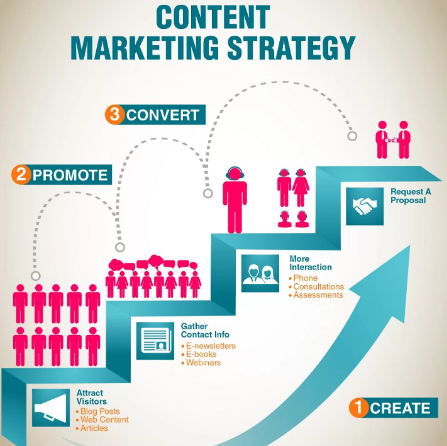
| Strategy | Explanation |
| Develop High-Quality Content | Create compelling content such as blogs, videos, and infographics that showcase your furniture products. Highlight key features, benefits, and unique selling propositions. |
| Target Relevant Keywords | Conduct keyword research to identify terms and phrases relevant to your furniture products. Use these keywords strategically in your content for better visibility. |
| Optimize for SEO | Implement SEO best practices such as using meta tags, optimizing images, creating internal links, and improving site speed to enhance search engine rankings. |
| Utilize Social Media Platforms | Leverage social media platforms like Facebook, Instagram, Pinterest, and Twitter to share your content and engage with your audience effectively. |
| Incorporate Visual Elements | Use high-quality images, videos, and infographics to make your content visually appealing and engaging for potential customers. |
| Collaborate with Influencers | Partner with influencers in the furniture or home decor niche to reach a wider audience and gain credibility through their endorsements. |
| Implement Email Marketing | Build an email list of interested prospects and regularly send them valuable content, promotions, and updates about your furniture products. |
| Analyse and Optimize | Monitor the performance of your content marketing efforts using analytics tools. Adjust your strategies based on data insights to optimize results continuously. |
Leveraging Social Media for Furniture Marketing
Social media platforms offer immense opportunities for furniture marketing. Utilize platforms like Instagram, Pinterest, and Facebook to showcase your furniture collections, interact with followers, run contests, and leverage influencer collaborations.
Search Engine Optimization (SEO) Techniques for Furniture Websites
Optimizing your furniture website for search engines is crucial for organic traffic. Implement SEO techniques like keyword research, on-page optimization, mobile responsiveness, and backlink building to improve search engine rankings and attract qualified leads.
- Keyword Research: Conduct keyword research for furniture, including product names, styles, and customer queries.
- On-Page Optimization: Optimize website elements such as titles, meta descriptions, headings, and content to improve visibility in SERPs.
- Mobile Responsiveness: Ensure your furniture website is mobile-friendly and offers a seamless user experience across different devices, as Google prioritizes mobile-friendly sites in search rankings.
- Backlink Building: Acquire high-quality backlinks from reputable websites in the furniture industry or related niches to increase domain authority and improve search engine credibility.
- Content Optimization: Create valuable and engaging content around furniture topics, including product descriptions, buyer’s guides, and blog posts, optimized with relevant keywords and internal links.
Pay-Per-Click (PPC) Advertising for Furniture Businesses
PPC advertising offers furniture businesses a targeted and measurable approach to reaching their audience. By leveraging platforms like Google Ads, businesses can tailor their ads based on specific keywords and demographics, ensuring they reach users with a high intent to purchase furniture.
Captivating ad copy grabs attention and boosts clicks, while optimized landing pages smooth the path to conversion.
Continuous PPC campaign monitoring and optimization refine strategies, boost ROI, and maintain competitiveness in the digital realm.
Email Marketing Strategies for Furniture Brands
Email marketing remains a powerful tool for nurturing leads and retaining customers. Segment your email list, personalize content, send promotional offers, and automate follow-up sequences to build relationships and drive repeat sales.
Strategies for Sustainable Growth in the Furniture Market

Sustainable growth requires continuous adaptation and innovation. Stay updated with industry trends, monitor competitor strategies, gather customer feedback, and iterate marketing strategies to maintain relevance and drive long-term success.
Conclusion:
In the furniture market, digital marketing drives visibility, engages customers, and boosts sales. Then by understanding the market dynamics, identifying target audiences, and leveraging the power of content marketing, social media, SEO techniques, PPC advertising, and email marketing, furniture businesses can position themselves for sustainable growth and long-term success.
Read more: 7 Steps to Run A Successful Amazon Store
FAQs
Content marketing helps furniture businesses showcase products, highlight features, engage customers, and build industry authority.
Social media platforms provide opportunities for visual storytelling, direct engagement with customers, influencer collaborations, running promotional campaigns. This results in reaching a wider audience interested in home decor and furniture.
SEO techniques as well as content optimization are crucial in enhancing visibility, attracting qualified leads, and improving search engine credibility.
Email marketing allows furniture brands to nurture leads, retain customers, send personalized offers and updates. Secondly it automate follow-up sequences, and build lasting relationships for repeat sales and customer loyalty.

Alex Mitch
Welcome to my blog! With over 10 years in digital marketing , I’ve seen its incredible impact on smaller businesses. Join me as we explore how digital marketing can grow your audience and boost your business. Whether you’re an experienced entrepreneur or just starting out, you’ll find practical tips and insights to enhance your digital marketing strategies.
7 Steps to Run A Successful Amazon Store
Running a successful Amazon store requires strategic planning and execution. To stand out in the competitive marketplace, you need to implement effective strategies that enhance visibility, attract customers, and drive sales. In this guide, we’ll explore seven actionable steps to boost your Amazon store’s performance and maximize your revenue.
What is An Amazon Store
An Amazon Store refers to a customized storefront on Amazon’s platform where sellers can showcase and sell their products. It provides a branded and personalized shopping experience for customers, allowing sellers to curate their product offerings, create themed collections, and highlight promotions or featured items.

Amazon Stores are designed to enhance brand visibility, drive customer engagement, and improve overall sales performance by providing a cohesive and immersive shopping environment within the Amazon ecosystem.
7 Steps for Boosting Your Amazon Store
Boosting your Amazon store helps you to gain visibility and grab more users. Consequently, your sales improve, and revenue increases as well. However, it requires a precise approach and adequate knowledge to boost your store.

Below are the steps you must follow
Optimize Product Listings
Optimizing your product listings is crucial for improving search visibility and attracting potential buyers. Use relevant keywords in titles, bullet points, and descriptions to enhance discoverability. Include high-quality images and detailed product information to provide a compelling user experience.
Enhance Product Images and Descriptions
Visual appeal plays a significant role in capturing customer interest. Invest in professional product photography and use multiple images to showcase different angles and features. Write clear and concise product descriptions that highlight key benefits and features to entice buyers.
Utilize Amazon Sponsored Products
Amazon Sponsored Products allow you to promote your listings and reach a broader audience. Create targeted ad campaigns based on keywords, product categories, and customer interests. Monitor performance metrics and adjust your strategies to optimize ad spend and maximize ROI.
Implement Effective Pricing Strategies
Competitive pricing is essential for attracting price-conscious shoppers. Analyze competitors’ pricing strategies and adjust your prices accordingly. Offer discounts, promotions, and bundle deals to incentivize purchases and drive customer engagement.
| Step | Details |
| Competitive Analysis | Conduct a thorough analysis of competitors’ pricing to understand market trends and set competitive yet profitable prices. |
| Dynamic pricing | Use dynamic pricing tools to adjust prices based on market demand, competitor pricing changes, and seasonal trends. |
| Discounts | Offer Discounts and Promotions, Provide limited-time discounts, promotional offers, and coupon codes to attract price-conscious shoppers. |
| Deals | Create bundle offers by combining complementary products or offering discounts on bulk purchases to increase average order value. |
| Keep a track | Continuously monitor pricing strategies, analyze their impact on sales and profitability, and make adjustments as needed for optimal results. |
Focus on Customer Reviews and Feedback
Positive reviews and ratings build trust and credibility with potential buyers. Encourage satisfied customers to leave reviews and respond promptly to feedback and inquiries. Address any negative reviews professionally and strive to resolve customer issues to maintain a positive reputation.
Leverage Amazon Advertising Services
Explore additional advertising options offered by Amazon, such as display ads, video ads, and sponsored brands. Create compelling ad creatives that resonate with your target audience and drive traffic to your store. Track ad performance metrics and refine your campaigns for optimal results.
Monitor and Analyse Performance Metrics
Regularly monitor key performance indicators (KPIs) such as sales, conversion rates, traffic sources, and customer behavior. Use analytics tools to gain insights into market trends, customer preferences, and competitor strategies. Adjust your marketing and sales strategies based on data-driven insights to stay competitive and maximize growth.

Regular Monitoring:
- Monitor key performance indicators (KPIs) such as sales revenue, conversion rates, traffic sources, and customer engagement metrics on a regular basis.
- Set up automated reports or alerts to stay informed about changes in performance and take timely actions.
Utilize Analytics Tools:
- Use analytics tools like Google Analytics, Amazon Seller Central’s analytics, or third-party software to gather data and insights.
- Analyze metrics such as bounce rates, average session duration, and customer demographics to understand user behavior.
Market Trends Analysis:
- Track market trends, including demand for specific products, seasonal fluctuations, and competitive pricing strategies.
- Identify emerging trends or shifts in consumer preferences to adjust your product offerings and marketing campaigns accordingly.
Conclusion
Boosting your Amazon store requires a comprehensive approach that focuses on optimizing listings, enhancing customer experience, and leveraging advertising opportunities. By following these seven steps and staying proactive in monitoring performance metrics, you can enhance your store’s visibility, attract more customers, and attain a successful amazon store.
Read more : PPC Marketing strategies for Amazon store
Frequently Asked Questions
The timeline for seeing results can vary depending on factors like product niche, competition, and the effectiveness of your strategies.
While Amazon Sponsored Products can be highly effective, there are other advertising options like display ads, video ads, and sponsored brands that can also contribute to boosting your store’s performance.
Customer reviews and ratings play a crucial role in building trust with potential buyers to run a successful amazon store accordingly. Positive reviews can significantly impact sales by influencing purchase decisions.
Key performance indicators (KPIs) to monitor include sales revenue, conversion rates, traffic sources, customer engagement metrics, and ad campaign performance.

Alex Mitch
Welcome to my blog! With over 10 years in digital marketing , I’ve seen its incredible impact on smaller businesses. Join me as we explore how digital marketing can grow your audience and boost your business. Whether you’re an experienced entrepreneur or just starting out, you’ll find practical tips and insights to enhance your digital marketing strategies.
PPC Marketing Lexicon – Ultimate Guide
PPC (Pay-Per-Click) marketing is a powerful strategy in the realm of digital marketing. It allows businesses to target specific audiences, control their advertising budget, and measure campaign performance effectively. In this ultimate guide, we’ll delve into the fundamentals of PPC marketing, its benefits, key elements for success, platforms and tools, campaign setup, monitoring and optimization, common mistakes to avoid, and more.
Table of contents
Definition of PPC Marketing
PPC marketing refers to a digital advertising model where advertisers pay a fee each time their ad is clicked. It’s a way of buying visits to your website rather than earning them organically through SEO. PPC ads can appear on search engines like Google and Bing, as well as on social media platforms and other websites.
Importance of PPC in Digital Marketing
PPC plays a crucial role in digital marketing strategies due to several reasons:
- Immediate Results: PPC campaigns can generate immediate traffic and results, unlike SEO which takes time to rank.
- Targeted Advertising: Advertisers can target specific demographics, locations, and interests, to ensure their ads reach the right audience accordingly.
- Measurable ROI: PPC offers clear metrics for measuring return on investment (ROI), such as click-through rates (CTR), conversion rates, and cost per acquisition (CPA).
How PPC Works
1. Auction System
PPC operates on an auction-based system, where advertisers bid for ad placement in search engine results or other ad spaces. The bid amount, along with ad quality and relevance, determines the ad’s position.
2. Keyword Selection
Keywords are central to PPC campaigns. Advertisers select relevant keywords that trigger their ads to appear when users search for those terms. Keyword research is crucial for targeting the right audience.
3. Ad Placement
PPC ads can appear at the top or bottom of search engine results pages (SERPs), as well as on websites and social media platforms. Ad placement depends on bid amounts, ad quality, and targeting settings.
Benefits of PPC Marketing
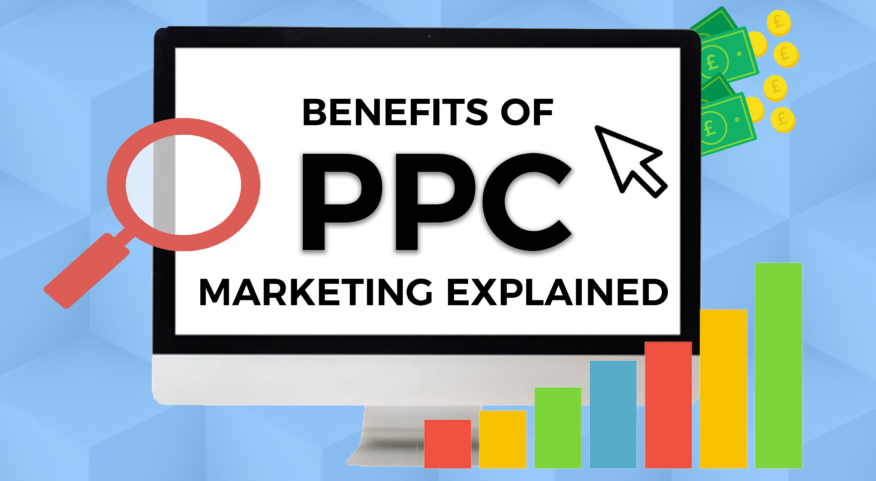
| Benefits of PPC Marketing | Explanation |
| 1. Targeted Advertising | PPC allows precise targeting based on demographics, interests, behaviors, and search intent. This ensures ads reach users likely to be interested. |
| 2. Cost-Effective | PPC offers control over advertising costs with options to set daily or campaign budgets. Advertisers only pay when their ads are clicked. |
| 3. Measurable Results | PPC campaigns provide detailed analytics and performance metrics, enabling data-driven decision-making and optimization. |
| 4. Quick Results | PPC campaigns can generate quick results compared to organic SEO efforts, driving immediate traffic and conversions. |
| 5. Flexibility and Control | PPC platforms provide flexibility in ad placements, targeting, bidding strategies, and budget allocation, giving advertisers control over campaigns. |
| 6. Brand Visibility | PPC ads enhance brand visibility by appearing prominently on SERPs and partner sites, increasing awareness among potential customers. |
| 7. Geographic Targeting | PPC allows geographic targeting, ideal for businesses aiming to reach specific locations or global markets with tailored messaging and offers. |
Key Elements of a Successful PPC Campaign
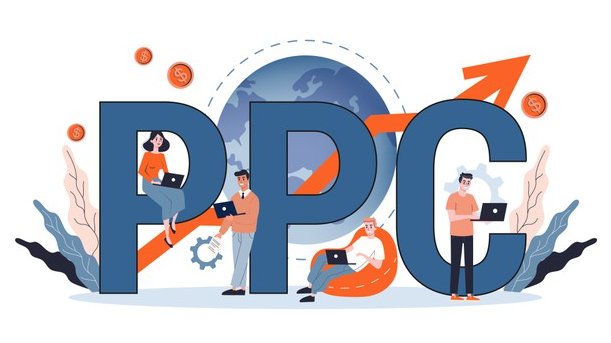
· Ad Copywriting
Compelling ad copy is essential to attract clicks and conversions. So the Ads should be concise, relevant, and include strong calls-to-action (CTAs) to encourage user engagement.
· Landing Page Optimization
The landing page is where users land after clicking an ad. Optimizing landing pages for relevance, user experience, and conversion goals is critical for maximizing PPC campaign success.
· Ad Extensions
Ad extensions enhance ads with additional information like phone numbers, location details, site links, and promotions. Using ad extensions improves ad visibility and click-through rates.
PPC Platforms and Tools
· Google Ads
Google Ads is the leading PPC platform, offering a range of ad formats including search ads, display ads, video ads, and shopping ads. It provides extensive targeting options and robust analytics.
· Bing Ads
Bing Ads, Microsoft’s PPC platform, is a viable alternative to Google Ads, especially for targeting specific demographics and reaching users on Bing and Yahoo search engines.
· AdWords Editor
AdWords Editor is a tool for managing Google Ads campaigns offline. It allows bulk editing, campaign optimization, and streamlined campaign management.
· Keyword Planner
Google’s Keyword Planner is a valuable tool for keyword research, providing insights into search volumes, competition levels, and keyword suggestions for PPC campaigns.
Setting Up a PPC Campaign
- Campaign Structure
Organizing PPC campaigns into well-structured ad groups helps improve relevance and performance. Campaigns should be structured based on product/service categories, targeting criteria, and goals.
- Budgeting
Setting a realistic budget for PPC campaigns involves balancing cost-per-click (CPC) bids, daily budgets, and overall campaign objectives. Secondly, budget allocation should consider ad performance and ROI.
- Ad Group Creation
Creating ad groups with tightly themed keywords and ad variations improves ad relevance and quality scores. Furthermore, each ad group should align with specific targeting parameters and user intents.
Monitoring and Optimizing PPC Campaigns
Performance Tracking
Regular monitoring of PPC campaign performance is essential. Tracking metrics like CTR, conversion rates, impression share, and ad positions helps identify areas for improvement and optimization.
A/B Testing
Testing different ad variations, landing pages, and targeting settings through A/B testing enables data-driven optimization and improvements in ad performance and conversion rates.
Bid Management
Optimizing CPC bids based on performance data, keyword competitiveness, and ROI goals is crucial for maximizing campaign results and maintaining cost efficiency.
Common PPC Mistakes to Avoid

· Irrelevant Keywords
Using irrelevant keywords can lead to wasted ad spend and low-quality traffic. Conducting thorough keyword research and negative keyword management is key to targeting the right audience.
· Neglecting Negative Keywords
Neglecting negative keywords can result in ad impressions for irrelevant search queries. Adding negative keywords helps filter out irrelevant traffic and improve campaign efficiency.
· Ignoring Ad Performance Metrics
Failing to analyze ad performance metrics like CTR, conversion rates, and Quality Score can hinder campaign optimization efforts. Moreover, regular performance analysis and optimization are essential for success.
Conclusion
PPC marketing is a dynamic and results-driven strategy for businesses to reach their target audience, drive traffic, and achieve marketing objectives. So through understanding the fundamentals of PPC, leveraging key elements for success, utilizing relevant platforms and tools, and continuously monitoring and optimizing campaigns, businesses can unlock the full potential of PPC advertising in today’s digital landscape.
Furthermore Learn more about digital marketing : Mastering the Art of SEO
FAQS
PPC (Pay-Per-Click) marketing involves paying for each click on your ads, providing immediate traffic but requiring ongoing investment. SEO (Search Engine Optimization) focuses on organic ranking in search results, offering long-term visibility but requiring time and effort to achieve rankings.
Conduct keyword research using tools like Google’s Keyword Planner to identify relevant keywords with high search volumes and low competition.
Quality Score is a metric used by platforms like Google Ads to measure the relevance and quality of your ads, keywords, and landing pages
Continuously monitor and analyze campaign metrics such as CTR (Click-Through Rate), conversion rates, Quality Score, and ROI. Secondly Optimize your ad copy, landing pages, targeting settings, and bid strategies based on performance data.

Alex Mitch
Welcome to my blog! With over 10 years in digital marketing , I’ve seen its incredible impact on smaller businesses. Join me as we explore how digital marketing can grow your audience and boost your business. Whether you’re an experienced entrepreneur or just starting out, you’ll find practical tips and insights to enhance your digital marketing strategies.
Mastering the Art of SEO for Success
In today’s digital landscape, mastering the art of SEO (Search Engine Optimization) is vital for anyone with an online presence. Whether you’re a business owner, marketer, or content creator, knowing how to optimize your website for search engines can significantly impact your visibility and success. This comprehensive guide will take you through the fundamentals of SEO, covering essential concepts, strategies, and common mistakes to avoid.
Table of contents
Understanding Search Engines
How Search Engines Work
Search engines like Google, Bing, and Yahoo use complex algorithms to crawl, index, and rank web pages based on various factors. These factors include relevance, authority, and user experience, among others.
Major Search Engines
Google dominates the search engine market, accounting for over 90% of global search traffic. However, Bing and Yahoo also have significant user bases and shouldn’t be overlooked in your SEO efforts.
Key SEO Concepts
Keywords
Keywords are the foundation of SEO. They are the terms or phrases that users type into search engines when looking for information. Effective keyword research and targeting are essential for optimizing your content and driving organic traffic.
On-Page SEO
On-page SEO refers to optimizing individual web pages to rank higher and earn more relevant traffic. This includes optimizing meta tags, headings, content, and images, among other elements.
Off-Page SEO
Off-page SEO involves activities outside your website that impact your search engine rankings. This includes backlink building, social media engagement, and online reputation management.
Technical SEO
Technical SEO focuses on optimizing your website’s infrastructure and backend to improve its crawling and indexing by search engines. This includes optimizing site speed, mobile-friendliness, and schema markup.
SEO Strategies
Seo Strategies include practices marketers perform to accomplish higher google rank. Below we have explained some to mastering the art of SEO.

| SEO Strategies | Description |
| Content Creation and Optimization | Creating high-quality, relevant content is key to SEO success. Content should be informative, engaging, and optimized for target keywords. Regularly updating and refreshing content also improves search visibility. |
| Link Building | Backlinks from reputable websites signal to search engines that your site is trustworthy and authoritative. Focus on earning quality backlinks through guest blogging, influencer outreach, and content promotion. |
| Mobile Optimization | With the rise of mobile devices, optimizing your website for mobile users is critical. Ensure your site is responsive, loads quickly, and provides a seamless user experience across devices. |
| Local SEO | For businesses targeting local customers, optimizing for local search is essential. This includes creating a Google My Business profile, obtaining local citations, and optimizing content for local keywords. |
| Voice Search Optimization | As voice search continues to grow in popularity, optimizing for voice queries is becoming crucial. Focus on natural language keywords, FAQ-style content, and schema markup for voice search optimization. |
Measuring SEO Success
Analytics Tools
Utilize tools like Google Analytics, Google Search Console, and third-party SEO platforms to track and measure your SEO performance. Monitor metrics such as organic traffic, keyword rankings, and conversion rates.
Key Performance Indicators (KPIs)
Define key performance indicators that align with your SEO goals. These may include organic traffic growth, keyword ranking improvements, backlink acquisition, and conversion rate increases.
Competitor Analysis
Regularly conduct competitor analysis to benchmark your SEO performance against industry peers. Evaluate their keyword strategies, content quality, backlink profiles, and overall digital presence to identify areas for improvement and strategic opportunities.
Content Performance Tracking
Track the performance of your content by analyzing metrics such as engagement rates, time on page, bounce rates, and social shares. Use this data to refine your content strategy, optimize underperforming content, and create more of what resonates with your audience.
Common SEO Mistakes
Here are some prevalent SEO mistakes to avoid when mastering the art of SEO
Keyword Stuffing
Avoid overloading your content with keywords, as this can harm user experience and result in penalties from search engines. Focus on natural keyword placement and prioritize valuable content.
Ignoring User Experience
A poor user experience, such as slow loading times or difficult navigation, can lead to higher bounce rates and lower search rankings. So we need to Prioritize user-friendly design and functionality.
Neglecting Mobile Users
With mobile devices accounting for a significant portion of internet traffic, neglecting mobile optimization can lead to missed opportunities. So make sure your website is mobile-friendly and provides a seamless experience across devices.
Not Optimizing for Local Searches
For businesses with a local presence, neglecting local SEO can limit visibility to potential customers. Secondly, optimize your website for local keywords, create location-specific content, and leverage Google My Business.
Future Trends in SEO
AI and Machine Learning
Advancements in AI and machine learning are shaping the future of SEO. Therefore, algorithms are becoming more sophisticated in understanding user intent, personalizing search results, and detecting spam tactics.
Voice Search Evolution
The evolution of voice search technology is changing how users interact with search engines. Hence optimizing for voice search requires understanding conversational queries and providing concise, relevant answers.
Video SEO
Video content continues to rise in popularity, presenting opportunities for SEO. So optimize your video titles, descriptions, and tags with relevant keywords to improve visibility in video search results.
Conclusion
SEO is a dynamic and ever-evolving field that requires continuous learning and adaptation. By mastering the art of SEO, understanding the key concepts, implementing effective strategies, and avoiding common pitfalls, you can improve your website’s visibility, attract organic traffic, and achieve your business goals through search engine optimization.
Must read Why Choose Furniturefy For the SEO Services to run a sucessful Furniture Business
FAQs About SEO
On-page SEO refers to optimizing elements within your website, like content and meta tags, while off-page SEO involves activities outside your website, such as backlink building and social media engagement.
SEO results vary depending on factors like competition, industry, and strategy. Generally, significant improvements can take several months to a year.
While ranking higher on Google is a primary goal, SEO also focuses on improving user experience, driving organic traffic, and ultimately increasing conversions.
You can start with basic SEO practices on your own, but for more complex strategies and optimizations, consulting with an experienced SEO professional is beneficial.

Alex Mitch
Welcome to my blog! With over 10 years in digital marketing , I’ve seen its incredible impact on smaller businesses. Join me as we explore how digital marketing can grow your audience and boost your business. Whether you’re an experienced entrepreneur or just starting out, you’ll find practical tips and insights to enhance your digital marketing strategies.



